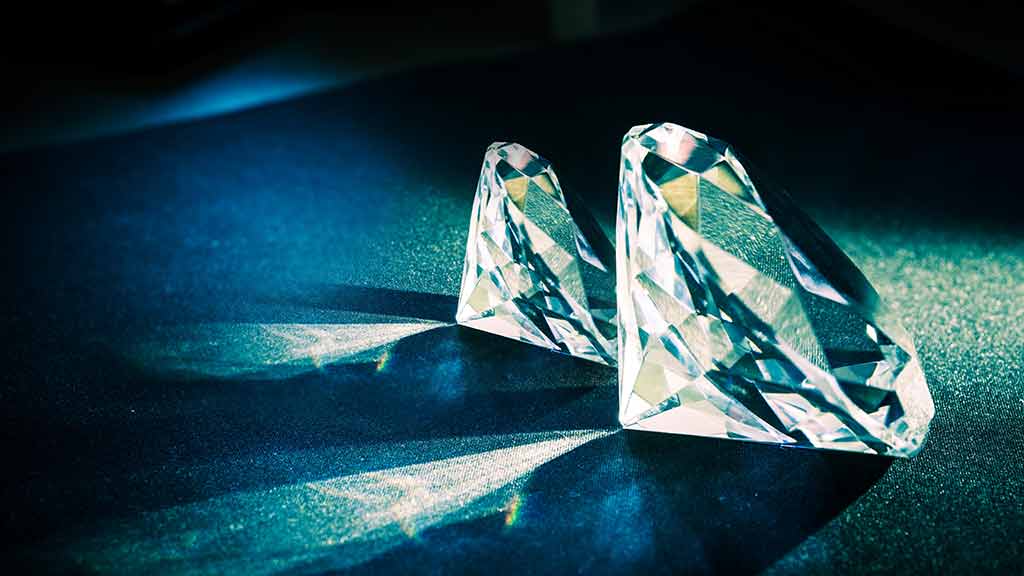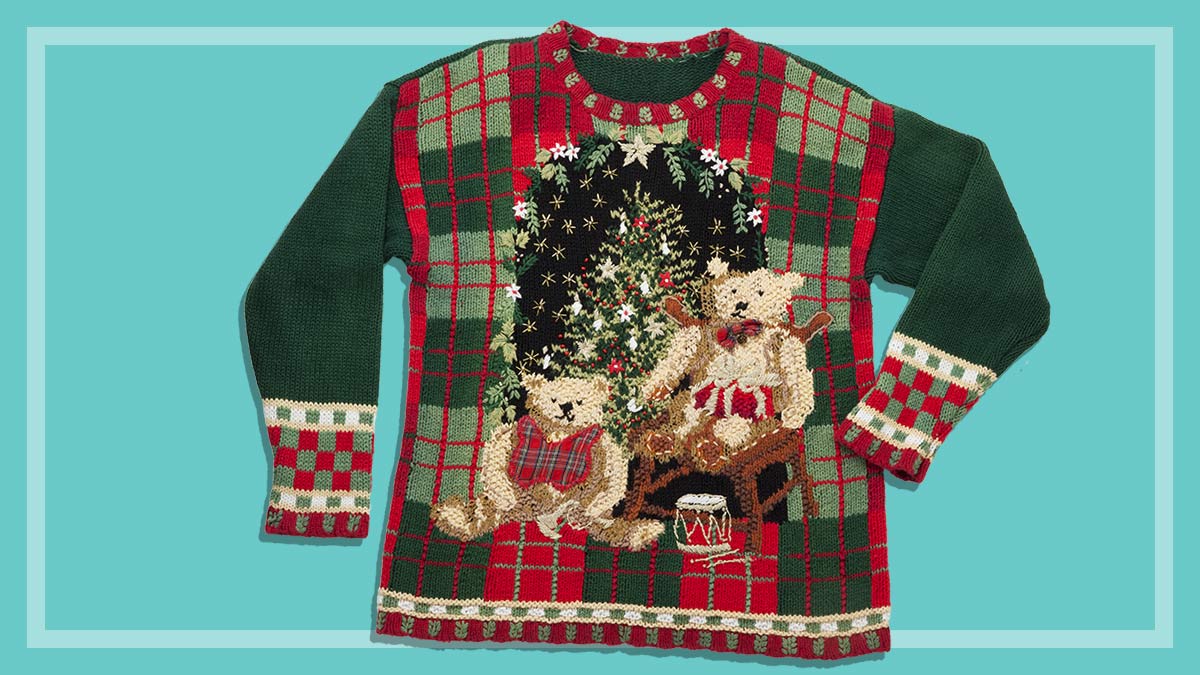Get our independent lab tests, expert reviews and honest advice.
Are lab grown diamonds the real deal?

With ethical questions hanging over diamond company monopolies, ‘blood diamonds’ and environmental sustainability, selling sparkling stones just isn’t what it used to be.
On this page:
- Natural diamond: The real McCoy
- Synthetic diamond: man-made but identical to natural diamonds
- Synthetic moissanite: shinier than a diamond, almost as hard
- Cubic zirconia: more dazzling but will dull
- CHOICE verdict
Even the famous De Beers diamond brand is diversifying, launching ‘lab-grown’ (also known as synthetic) diamonds for as little as $US800 for a one carat stone – that’s around a quarter of the price of a one carat natural diamond.
And while there are signs that the romance of a natural diamond is no longer considered the be all and end all, for many jewellery lovers there’s simply no substitute for a natural diamond, created from the earth over billions of years. For others, synthetic diamonds and simulants might be a better fit, especially given the price difference.
Before you decide which group you belong to make sure you know what the differences are between all the alternatives, how they’re valued and how the price of each option varies.
Natural diamond: The real McCoy
Beautiful, brilliant, bright and breathtaking – for many, a natural diamond is prized most when it’s clear and sparkling white (though fancy coloured diamonds can include many different shades and also reach higher prices). The Gemological Institute of America (GIA) says diamonds are best described – and valued – using the four Cs: colour, clarity, cut and carat weight.
The natural diamonds we buy today are thought to be between approximately 1 billion and 3 billion years old. They form deep in the earth where carbon has crystallised during exposure to high pressure and temperature, and are carried closer to the earth’s surface by volcanic activity. Only about 30% of mined diamonds are of the appropriate size and quality for jewellery.
Price can vary greatly and is not determined by weight alone. To understand pricing for loose natural diamonds, you must understand the need to compare similar stones. For example, near-equal stones in carat weight, colour, clarity and cut may be compared, but variations dictate different prices.
How natural diamonds are priced:
- Using a D–Z scale, diamonds range from colourless (white) through to light yellow. The closer to Z, the more saturated the yellow.
- Aside from coloured diamonds like pink, blue and canary, the most valuable diamonds are colourless (categorised D). E and F are also excellent and may have such little difference between them that only experts can tell.
- G, H and I diamonds are almost colourless and will appear so to the naked eye, but will show slight colour if compared to D, E or F-graded stones.
- J and beyond will have faint yellow tints that can appear more prominent when placed on a white setting or against a higher-grade diamond.
- The above refers only to colour grading – there is also cut, clarity and carat weight to take into account. Price comparisons are difficult unless comparing like for like on all counts.
- As a guide, the Diamond Registry, an online diamond price and information platform, says the average wholesale price for a GIA-certified one-carat round diamond can range from between $US3080 (grade K, lowest clarity) and $US26,950 (grade D, highest clarity).
If you’re buying a diamond, be sure to do your due diligence and get some documentation. Choose a qualified jeweller who can prove industry membership to the Gemmological Association of Australia (GAA), the Jewellers Association of Australia (JAA) or the National Council of Jewellery Valuers (NCJV). Once you have selected a diamond, ask for an independent grading report. This can tell you if the stone is natural or man-made, among other things.
Consider keeping your diamond secure by having a laser inscription on the stone. And finally, get the diamond appraised by a registered valuer (you can find one through the NCJV) and insured. The GAA or the JAA can advise on the best documentation processes.
Synthetic diamond: man-made but identical to natural diamonds
Synthetic diamonds have been around since the 1950s when they were first devised for industrial use in drills, mining equipment and semiconductors.
They’re made in laboratories where a controlled environment mimics the conditions of natural formation. In labs, synthetic diamonds may be grown in a matter of weeks, unlike natural diamonds, which take billions of years to form.
Though essentially chemically identical, there are a few differences between natural diamonds and synthetic – one is clarity. The clarity of a synthetic diamond is likely to be perfect, compared to a natural diamond which is likely to have internal flaws (although synthetic diamonds are also made with flaws).
The cleaner crystal structure of synthetic diamonds is due to their formation in a controlled environment. Experts can’t tell a synthetic from a natural diamond without sophisticated testing equipment, says gemmologist Karen Lindley, who is also a registered valuer and jeweller.
“Because synthetic diamonds have the same molecular structure as natural diamonds, specialised equipment is needed to discern – visually it is impossible to tell the difference without using the correct equipment,” says Lindley, who owns Diamonds by Design in Sydney’s iconic Dymocks Building.
As for cost, it’s difficult to make a direct comparison since synthetic stones are flawless with better clarity. Generally, synthetic diamonds cost a fraction of the price of mined stones, and they’re getting cheaper.
De Beers has just entered the mainstream synthetic diamond market with its new Lightbox brand. You can pick up a man-made diamond from $US200 for a quarter-carat stone or pay around $US800 for a one-carat gem, which the company claims is cheaper than existing lab-grown diamond offerings, and a quarter of the price of natural diamonds.
Synthetic moissanite: shinier than a diamond, almost as hard
Moissanite (silicon carbide) is an even rarer natural gem than diamonds, so moissanite for jewellery is grown in a laboratory. At approximately 9.25 on the Mohs scale (the industry scale from 1 to 10 used to measure the relative hardness of a mineral by its resistance to scratching), it’s the hardest of all diamond simulants and is often sought for its more dazzling sparkle.
Moissanite disperses light so well it’s said to be more brilliant than a diamond and therefore more sparkly – 10% more, according to some sources. Like a diamond, it won’t lose brilliance over time and it should come with a lifetime warranty.
Almost as hard as diamonds, slightly lighter in weight and giving off more spectral colours than a diamond, some industry experts say skilled jewellers can be fooled into thinking a synthetic moissanite is a diamond if they don’t have specialised testing equipment.
Synthetic moissanite costs much less than natural diamonds – approximately one tenth to one quarter of the price.
Cubic zirconia: more dazzling but will dull
Though not quite as hard as the other diamond alternatives, synthetic cubic zirconia (CZ) is still considered to be reasonably durable at 8.5 on the Mohs scale. Optically flawless and usually colourless (though it can be tinted), CZ has remained the most ubiquitous competitor for diamonds since commercial production began in 1976.
With a higher dispersion rate than a diamond (responsible for the ‘fire’ of a stone), a CZ will sparkle and reflect light more than a diamond – at least at first.
Cubic zirconias are heavier than diamonds, which makes it impossible to compare a CZ carat weight with that of a diamond. But with it’s higher dispersion rate, a CZ will sparkle and reflect light more than a diamond initially, though it will scratch and cloud over time, which will affect its shine. If you own a piece of CZ jewellery which has lost its lustre, but the metal and setting is good quality or the piece has sentimental value, you might consider it worthwhile to replace the stone with another CZ – you can find cubic zirconia jewellery for well under $100 dollars.
CHOICE verdict
Like so many commodities, a significant percentage of a diamond’s value is lost the moment you walk out of the store with it – which you might know if you’ve ever tried to sell second-hand diamond jewellery.
Gemmologist Bill Sechos is the CEO and owner of Gem Studies Laboratory (GSL), the grading laboratory endorsed by the GAA. Sechos is also a registered jewellery valuer and the spokesperson for the GAA.
“The second-hand market is the same, no matter the industry or product. Think cars or electronics. Their second-hand value is nowhere near replacement with a new model or product,” said Sechos, referring to resale prices for both real and synthetic diamonds.
So unless you’re talking about outstanding or rare diamonds, average diamond jewellery (both natural and synthetic stones) is probably best thought of as a wonderful emotional investment rather than a reliable long-term money-spinner.
Synthetic diamonds may offer a better financial alternative for those looking to save money. Since natural and synthetic stones are indistinguishable to even the most well trained jewellers without sophisticated testing tools, it’s only you who’ll know if your rocks are ‘real’.





